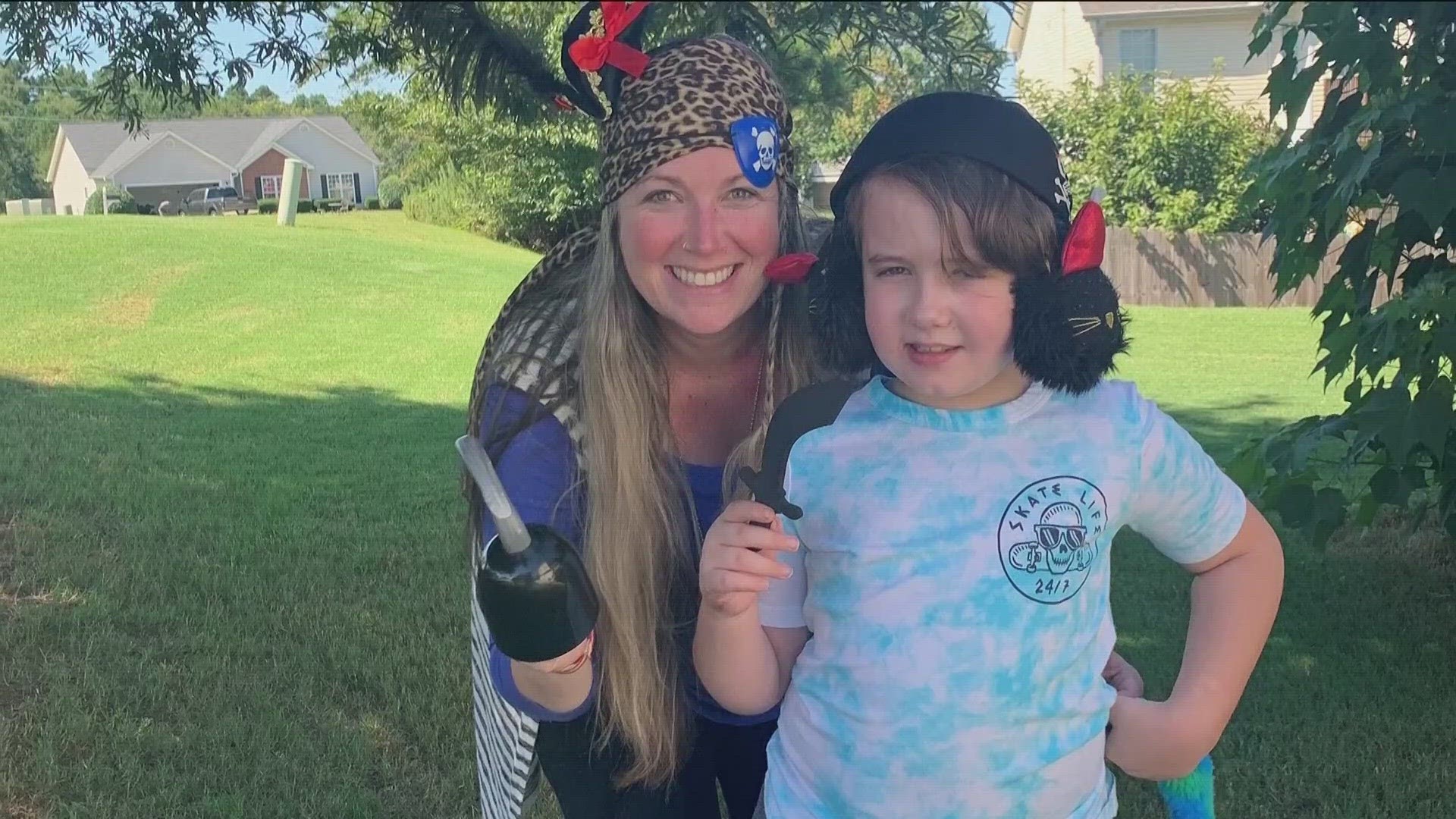ATLANTA — New technology is helping families at Marcus Autism Center get answers faster.
The center, part of Children's Healthcare of Atlanta, recently announced the launch of a new eye-tracking tool that can help diagnose autism spectrum disorder more quickly and accurately.
Called the EarliPoint Evaluation, the tool has been authorized by the FDA for use with children between the ages of 16 and 30 months to "aid in the diagnosis and assessment of autism."
The eye-tracking tool, developed by doctors Ami Klin and Warren Jones, collects data 120 times per second and, within 12 minutes of video watching, can compare the moment-by-moment looking behavior of a child and how that behavior compares to typical milestones.
Renee Britt's son, Dawson, was among the first to use the tool during the clinical trial.
"Dawson is amazing," Britt said. "He's the typical clown in our family. We call him the 'mayor' of everywhere he goes. He is awesome, awesome Dawson."
From the time Dawson was little, life seemed pretty typical, his mother said.
"He would do 'touchdown' and put his hands up, 'Go Dawgs,' Britt said. "He could name a lot of things, and he was very interactive. And then all of a sudden, he wasn't."
In their search for answers, the Britt family encountered obstacles familiar to other families: difficulty finding a specialist and long waitlists for an evaluation.
"It was a six month wait at least. We found out later that some people were waiting a year or longer," Britt said. "If we had waited a year, he'd have been four. That's a lifetime for a baby. It's a lifetime to live, and you don't know what to do."


When a friend mentioned Marcus Autism Center, Britt decided to call the center and learned about a clinical trial underway for the eye-tracking tool.
"Dawson was three when we found out about the trial," she said. "At that point, we couldn't find anywhere to see Dawson, so we were open to anywhere that would see our boy."
The EarliPoint eye-tracking tool provided clarification the family had been searching for, capturing Dawson's eye movements and social interactions with a series of videos.
"They were able to actually show us what it looked like, what he looked like, what he was looking at," Britt said. "It's obvious that there's a difference in the way that Dawson sees the world, the way he learns."
Walking away with a folder and news of Dawson's autism diagnosis was "heavy," Britt said, but the direction of what to do next was life-changing.
"Being at Marcus Autism Center gave us that starting point to be able to say, 'Right now, I know exactly what to do. Now I know the road map of where we need to go next, the next step that we need to take and what that's going to look like for him,'" Britt said. "If we'd had to wait a year, six months, like [others] were initially telling us, our life would look completely different. That's a year of not knowing how to help our son."
The time saved is critical for families, children and specialists amid long wait lists.
"We don't want any child to wait for diagnostic services, and using technology such as this can hopefully bring kids in faster, cut down on some of the time and the expertise needed," Dr. Cheryl Klaiman, Director of Diagnostic Services at Marcus Autism Center, said. "We're interviewing all the time for more psychologists because we can't keep up with the demand. So hopefully technology like this that doesn't require that same expertise can help us reduce some of that."
The time saved using the eye-tracking tool not only means the ability to reach more families but also means more time specialists can spend offering guidance following a diagnosis.
"We can explain to them a little bit more about those strengths and vulnerabilities with their child, what the next steps should be, how they can access care," Dr. Klaiman added. "So it just changes kind of where we're putting our effort with families."
Thanks to such support and therapy, Dawson can now be on the sidelines with his family, cheering on his sister while she plays. He's tackling unfamiliar challenges like pushing a noisy lawnmower. He can ride out the sounds of a summer storm with his two-year-old brother in tow.
"Everyone loves him. He is so funny," Britt shared. "We would not be surprised if he was a little comedian when he grew up."

